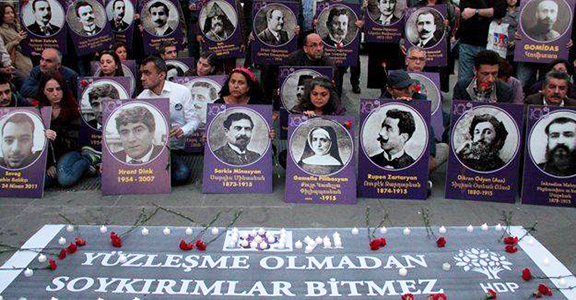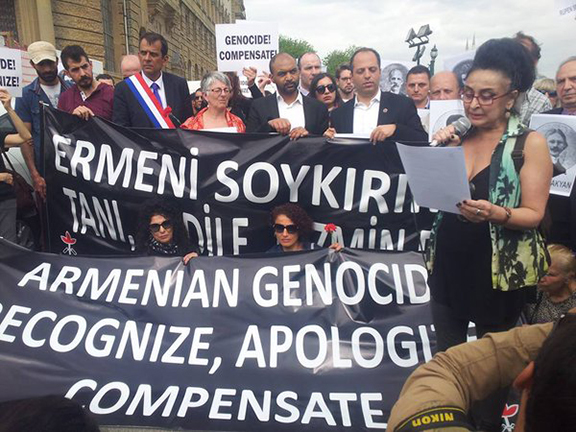
Armenian Genocide Commemoration took place in Istanbul on April 24 (Photo: Hrant Kasparyan)
ISTANBUL (Armenian Weekly)””The Armenian Genocide was commemorated at Istanbul’s Hayderpasha train station on April 24. Participants held banners and photographs of the intellectuals arrested and killed in 1915, and posters demanding recognition and reparations for the Armenian Genocide.
In 1915, members of the Istanbul Armenian community, including intellectual and cultural leaders, were arrested in their homes, detained at the city’s central prison (now the Museum of Turkish and Islamic Arts in Sultanahmet Square), and then sent off to the Haydarpasha train station from where they were sent to the interior to their deaths.
The following statement by the Human Rights Association of Turkey Istanbul branch was read in Turkish, Armenian, and English at today’s commemoration.

The Armenian Genocide was commemorated today at Istanbul’s Hayderpasha train station. (Photo: Hrant Kasparyan)
The Genocide that Lasts
When a crime goes unpunished, it continues to be committed. Denial perpetuates genocide.
The Armenian Genocide is a crime against humanity that continues to be committed because it is denied and its perpetrators have gone unpunished.
One-hundred-and-one years ago today, people from all walks of life from the Armenian community, but especially leading intellectuals, poets, writers, and journalists, were shipped here to Haydarpasha from Sarayburnu before they were sent to their deaths in Anatolia. Very few survived; most were killed.
These arrests represent the beginning of the genocidal process realized by way of clear orders by the Committee of Union and Progress (CUP), the central government of the Ottoman Empire, as well as the effective organization of the provinces for the execution of these orders and the participation of the local inhabitants.
Before 1915, according to the census of the Istanbul Patriarchate, the Armenian population of the Empire was 2 million, and Armenians lived in 2,925 settlements comprising cities, districts, and villages. These communities had 1,996 schools, 173,000 male and female students, and 2,538 churches and monasteries. The Armenian social existence, which had been strikingly vibrant, was destroyed not only by outright massacres and exile, but also through the demolition of social infrastructure such as schools, libraries, churches, etc., as well as material dispossession. Their institutions, culture, history, and civilization, even the vestiges of their existence were subject to destruction.
The genocide of 1915 was also “SEYFO,”